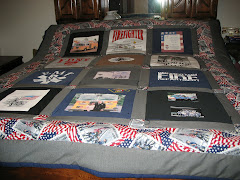
The book for the final week of the British Novel is At-Swim-Two-Birds by Flann O'Brien. The author spent 5 years writing At-Swim. According to Gass's introduction, it was a book that Joyce loved and Hitler hated. According to Anna Clissman, At-Swim is an anti-novel if you rely on the following definition by M.H. Abrams: "... a work which is deliberately constructed in a negative fashion, relying for its effects on omitting or annihilating traditional elements of the novel, and on playing against the expectations established in the reader by the novelistic methods and conventions of the past." The narrator of the story, who is never given a name, is a university student who spends more time in his room, sleeping and writing than he does at the university. The narrator is writing a story with Trellis has the main character. Trellis, the owner of a public house, also spends more time sleeping and writing than attending to business. He, too, is writing a novel. So, we have stories within stories which made for some slow reading. This book was probably the most difficult and the least favorite of the 8 books I have read for this course.



















